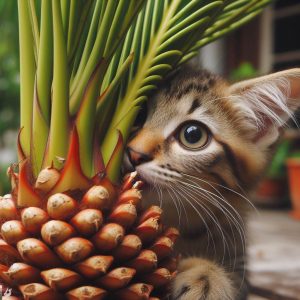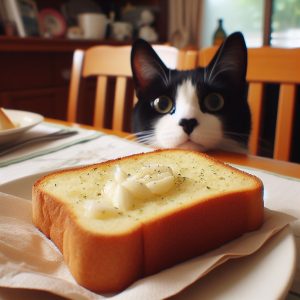Cats love milk, right? As cute as the image of a kitten lapping up a saucer of milk may be, the reality is a bit more complex when it comes to feline digestion. Milk contains lactose, a type of sugar that cats have difficulty digesting due to their lack of lactase enzymes. So can cats drink milk at all? And if so, is cold or warm milk better for cats?
As a responsible cat owner, you want to make sure you are providing kitty with the healthiest diet possible. Understanding the pros and cons of offering milk to cats will allow you to make an informed decision about including it in your furry friend’s food regimen.
In this definitive guide, we will explore all aspects of cats and milk to help you determine if your feline can handle it and if so, at what temperature. Let’s dive in!
Can Cats Drink Milk? The Lowdown on Lactose
Mother’s milk provides essential nutrients and antibodies for newborn kittens. However, most adult cats are lactose intolerant meaning they lack the enzyme lactase needed to properly digest the lactose found in regular cow’s milk.
When a lactose intolerant cat drinks milk, it can result in diarrhea, vomiting, gas, and abdominal pain.
The exception is that some adult cats retain the ability to produce lactase and can drink normal milk without issue. However, there is no way to know if your cat falls into this category without closely monitoring their reaction.
So while milk is not toxic to cats, the risks associated with lactose intolerance mean it is generally not recommended as a part of their regular diet.
That said, there are some scenarios where cats can occasionally consume small amounts of milk, or better yet, cat-friendly milk alternatives. Let’s break it down:
✔️ Small Amounts of Regular Milk
Most cats will experience digestive upset when drinking cow’s milk. But some cat owners report that their kitties are able to tolerate small volumes of milk just fine, such as a tablespoon or two.
Signs of lactose intolerance to look out for include loose stool, diarrhea, vomiting, audible intestinal gurgling, and flatulence after consuming milk. If you do decide to offer your cat a taste of milk, start with just a tiny amount and monitor them closely for any reaction.
✔️ Lactose-Free Milk
Lactose-free milk is treated with the lactase enzyme which breaks down lactose sugars to make it easier to digest. This type of milk may be tolerated by some lactose intolerant cats.
Again, it’s important to introduce lactose-free milk in small quantities first to see how your cat handles it. If no GI issues occur, you can offer modest portions from time to time. Just make sure it is plain lactose-free milk with no added sugars or flavors.
✔️ Cat Milk Alternatives
Specifically formulated cat milk is the safest milk option for felines. Brands like Whiskas and Cat-Sip make cat milk using lactose-free milk or milk proteins. Other alternatives are cat milk replacements made from high-protein non-dairy liquids like bone broth or coconut milk.
Offer the serving size recommended based on your cat’s weight and monitor for any signs of an upset tummy. Cat milk is generally very digestible for kitties. Plus it provides a nice treat they’ll love and nutrients to boot!
Is Cold or Warm Milk Better for Cats?
Now that we know some cats can occasionally have small amounts of certain types of milk, the next question is – at what temperature? Is cold or warm milk more stomach-friendly? Here are some key considerations:
Cold Milk
Cold milk straight out of the refrigerator may taste refreshing to us, but could shock a cat’s digestive system. Just like drinking an ice cold beverage can cause stomach cramps in people, the same is true for cats.
Additionally, milk that is too cold may discourage a cat from lapping it up at all. Cats prefer to drink liquids that are room temperature or slightly warmed.
So cold milk can be hard on your kitty’s tummy – and also less appetizing. Better to let that refrigerated milk come up in temperature before serving.
Warm Milk
Milk that has been gently warmed to room or body temperature is easier for cats to digest. The small increase in temperature makes the milk more enticing while also feeling soothing on the stomach and palate.
Warm milk essentially splits the difference – not too cold to upset the tummy, not hot enough to burn. Serving it at this just-right temp makes it most agreeable and comfortable for feline consumption.
Lukewarm Milk
What about lukewarm milk? This means milk that is only slightly warmed, perhaps 15-20 seconds in the microwave. While better than cold, lukewarm milk may still be too cool for a cat to enjoy properly.
The optimal milk temperature for cats is around 100 degrees Fahrenheit. Use a food thermometer to test the milk and ensure it has been adequately warmed before serving.
A quick recap – cold milk can be harsh on digestion, while truly warm milk is cat-pleasing in both palatability and gentleness on the stomach. Lukewarm lands somewhere in the middle. Check that milk thermometer for the 100 degree Goldilocks zone!
Tips for Serving Milk to Cats
If you’ve determined milk is well tolerated by your particular cat, follow these tips for serving it safely:
- Choose the right milk type – lactose-free, cat milk alternatives, small amounts of regular. Never chocolate or flavored milk which is toxic for cats.
- Portion control – no more than 1-2 tablespoons at a time. Too much can overwhelm their digestive capacity.
- Warm it up – heat milk to room temperature or body temperature for easiest enjoyment and digestion.
- Use a shallow dish – allow cats to lap milk from a wide, shallow bowl rather than a narrow, deep one.
- Give it as a treat – offer milk sparingly, not as an everyday beverage. Monitor for tolerance.
- Rinse afterward – immediately rinse your cat’s chin and mouth area after drinking milk to remove residue and prevent dermatitis.
With these best practices, you can allow your cat the occasional milk treat while promoting their health and happiness. Use caution and monitor their response. Discontinue use if any concerning symptoms arise.
Healthier Treats Cats Can Drink
While the verdict is still out on milk for cats, there are plenty of nutritious cat drinks you can offer instead:
- Cat water fountains provide fresh flowing water to entice hydration
- Broths like tuna, chicken, and bone broths appeal to cats’ savory flavor preference
- Cat juice products offer hydration with added vitamins and minerals
- Cat milk replacements give the creaminess of milk without the lactose
- Pet nutraceuticals supply functional benefits like joint support or calming
Talk to your veterinarian about healthier drink options specific to your cat’s needs and preferences. Cats have simple tastes but offering variety can ensure proper nutrition and keep their tastebuds excited.
Signs Your Cat is Lactose Intolerant
How can you tell if your cat suffers from lactose intolerance? Here are common symptoms to look out for after milk consumption:
- Diarrhea or loose, smelly stool
- Increased frequency of bowel movements
- Gas or flatulence
- Audible gurgling from the abdomen
- Vomiting or regurgitation
- Lethargy or lack of appetite
- Dehydration
If your cat shows any concerning symptoms within 2-8 hours of drinking milk, call your vet right away. LIkely you will need to avoid serving milk in the future and stick to low-lactose cat milk products or non-dairy alternatives that are easier to digest.
Catching lactose intolerance early and removing milk from the diet prevents ongoing digestive upset and promotes your cat’s future health.
The Bottom Line: Should Cats Drink Milk?
While milk is a classic favorite treat for cats, the potential for digestive issues due to lactose means it should only be an occasional indulgence for healthy cats that tolerate it well. Monitor your cat’s reaction closely and discontinue use if any concerning symptoms arise.
Lactose-free and cat milk formulations allow for safer milk consumption. But even then, portion sizes should be restricted to just a tablespoon or two. Water should always be your cat’s primary beverage, supplemented by kitty-safe broths, juices, and milk replacements.
Ultimately, milk should be considered an infrequent treat, not a staple beverage. Prioritize your cat’s health and wellbeing over offering milk just because cats supposedly love it. Follow vet recommendations and pick the most digestible options at proper serving temperatures.
With some common sense precautions, you can let your kitty lap up this creamy delicacy once in a while without stirring up any cat-astrophes in the litterbox! Just be attentive to their response and offer milk in strict moderation.


